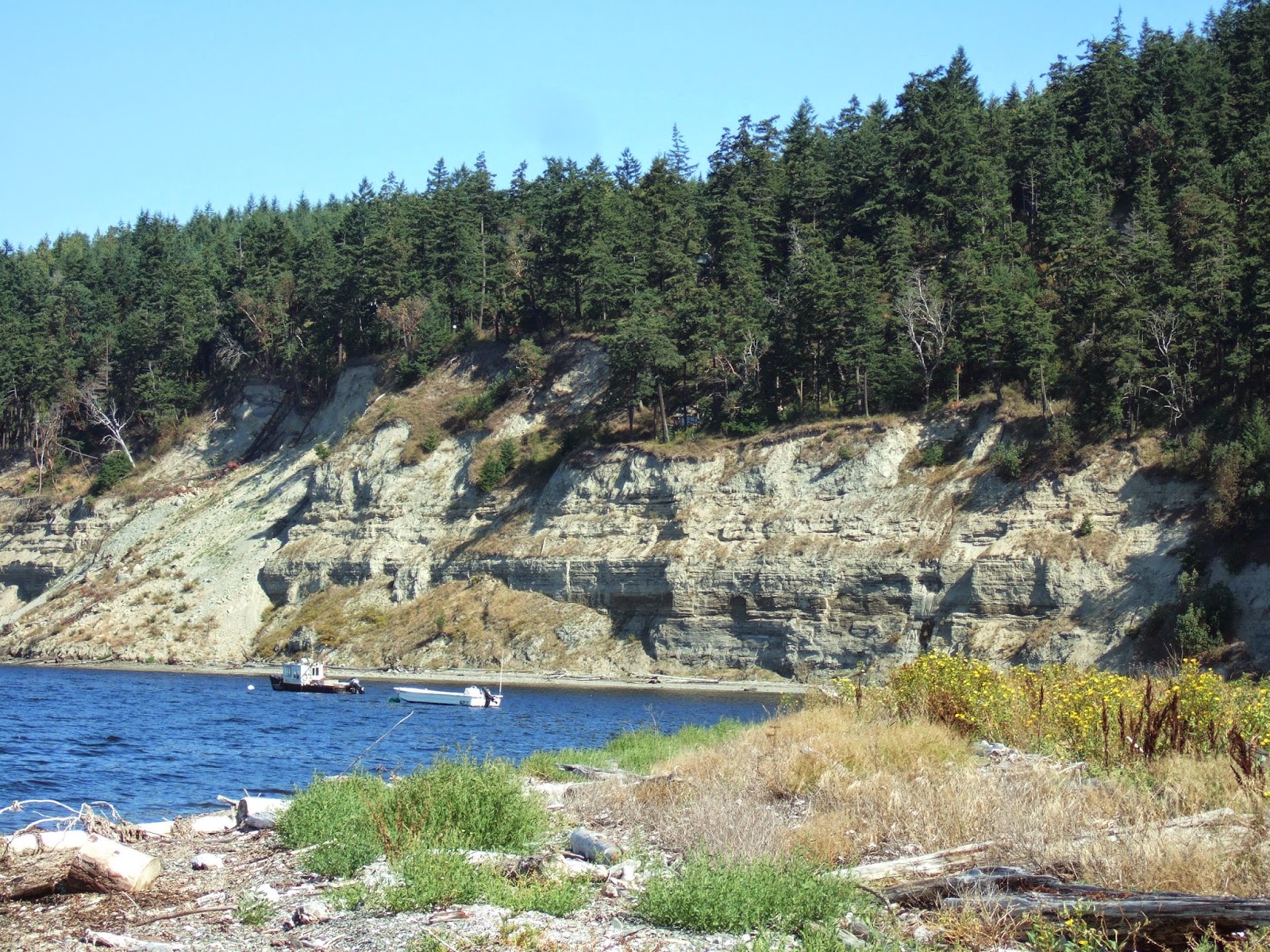Subtle variation in the geologic units on a bluff can make a big difference in how slopes fail. At this bluff in Discovery Bay, west of Port Townsend, the main driver is erosion at the base of the bluff by wave action. But how the bluff fails is important in terms assessing risk to sites above the slope.
A few notes on this view of the bluff. The trees on the slopes above the bare bluff are generally mature Douglas fir. Its a harsh growing environment so most of these trees are on the order of 80 years or older. The lower slope is pre last glacial period silts, clays and sands that are compact and resistant to erosion and stand vertical. The slopes above vertical bluff sections are far from vertical suggesting looser material. Indeed those slopes are underlain by mostly sand and gravel. Note also the thick wedges of landslide debris at the base of the bluff. The one behind the boats is from a slide that took place in 1998. The one on the far left that covers the cliff face took place two years ago.
Closer view shows vertical fractures in the silt layers on the steep bluff
Chunks of silt spalled off the bluff face as brittle blocks
What had been a hard, dense, over-consolidated silt has dilated into weak silt incapable of supporting the units above. As this silt and clay collapses and falls apart the slope above of loose sand and gravel then pours down the slope. The process of the clay and silt units changing from hard compact material to highly fractured material and then soft mush is a feature of many larger landslide complexes. At this particular site the scale of the slides is relatively small perhaps because the zone of altered silts is fairly thin.









No comments:
Post a Comment